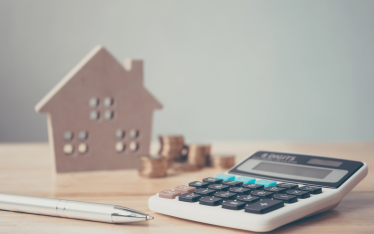Have you noticed that right now it seems so hard to get a home loan in Australia? It’s not just you, there is a reason why this is happening.
If you are looking into finding a home loan you will probably find that there are so many hurdles to jump, and the requests from the banks and financiers seem never-ending.
So, why is it so hard to get a home loan in Australia right now?
In short, The Royal Commission.
A number of lax lending practices by some of Australia’s biggest lenders were discovered by the Royal Commission into Misconduct in the Banking, Superannuation and Financial Services Industry that concluded in early 2019.
Some banks failed to verify the living expenses of home loan applicants, which was of particular concern. This led to many cases of people receiving loans that they were unable to repay.
It was also revealed that one of the bank regulators, ASIC, did little to punish misconduct. Which resulted in little incentive for banks to comply with legal obligations.
ASIC promised greater scrutiny of lending practices in response to the Royal Commission results. And lenders began to ask for a lot more information when assessing home loan applications. They now require detailed proof of both income and expenditure at a level that many people may find intrusive.
Bigger deposits required to counteract greater borrowing risk
Due to the decline in home prices in Australia’s major cities, buyers don’t need to borrow as much for a given property. Which should make it easier to get a loan.
However, falling prices create a greater risk for the banks. One way to reduce this risk is to require a higher deposit, which extends the time it takes to save that deposit.
Stringent stress testing
The prudential bank regulator APRA requires that banks check on their borrowers’ ability to service their loans when there is a significant increase in interest rates. This was in place even before the Royal Commission results were introduced.
So, while it may be possible to borrow at an interest rate of less than 4% per annum, the banks need to check that the loan is still affordable at a rate of more than 7%. The amount that can be borrowed is reduced as a result.
Improve your chances of getting a loan by being prepared
The main response to this more difficult lending environment is simple, but that doesn’t make it pleasant.
Unless you are able to increase your income, you’ll need to save more, which inevitably means spending less.
Try these tips to get you started and improve your chances to get a home loan:
- Apps such as TrackMySPEND from MoneySmart can help you track your spending and make it easier to work to a budget. Some banking apps like AMP and NAB offer budget tracking features as well.
- Keep detailed records of your saving and spending. You will be asked for them come loan application time.
- Start saving early. You are more likely to be successful in your home loan quest if you can show a consistent history of saving and responsible spending spanning years rather than months.
- Shop around. By all means, start with your regular bank, but also check out what the non-bank lenders and mortgage brokers can offer.
- Reduce number of credit cards and credit limits.
- Pay out or consolidate debts.
- Save bank statements, pay slips and tax reports, ready to hand over to the home loan broker.
All of this preparation will make your quest for a new home loan a lot easier.
Need budgeting, saving or home loan advice? Contact our Think Big Home Loan Specialist.
This represents general information only. Before making any financial or investment decisions, we recommend you consult a financial planner to take into account your personal investment objectives, financial situation and individual needs. Speak with a tax accounting specialist (such as TBFG) who is up-to-date with applicable deductions, tax law, and business structuring to get you the biggest return on your EOFY tax assessment.










